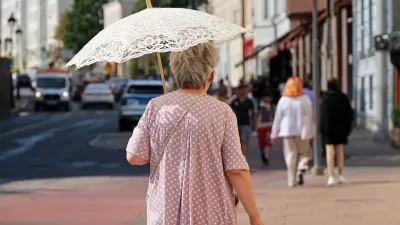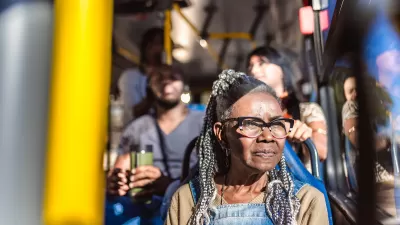New research seeks to learn how homes, neighborhoods, and communities affect how older residents are affected by climate change.

In a new paper published in Housing Policy Debate, Jennifer Molinsky and Ann Forsyth assess the influence of environmental factors on older adults’ vulnerability to climate change. This research is important because older adults are at “greater immediate risk” due to the higher likelihood of having mobility limitations, respiratory illnesses, or other risk factors, the authors explain.
The paper focuses on communities, neighborhoods, and homes as three nested but distinct spaces where climate risks can be mitigated or exacerbated in various ways. “For example, while the risk of severe storms, floods, or extreme heat differ by region, they can also vary locally by neighborhood, block, or house. A low-income renter may have little control over temperature or air quality in their building, creating greater exposure and sensitivity to heat, cold, or smoke entering the home through poorly sealed windows.” Meanwhile, residents of high-rise buildings may become stranded during an extreme weather event if elevators stop working. At the community scale, rural areas with few health facilities may predispose residents to worse health outcomes.
The authors note that more research is needed into the intersection of aging, climate change, and homes and neighborhoods, and the economic and demographic differences that impact how and where older people live.
FULL STORY: The Homes and Neighborhoods of Older Adults Shape Their Vulnerability to Climate Change

Maui's Vacation Rental Debate Turns Ugly
Verbal attacks, misinformation campaigns and fistfights plague a high-stakes debate to convert thousands of vacation rentals into long-term housing.

Planetizen Federal Action Tracker
A weekly monitor of how Trump’s orders and actions are impacting planners and planning in America.

In Urban Planning, AI Prompting Could be the New Design Thinking
Creativity has long been key to great urban design. What if we see AI as our new creative partner?

King County Supportive Housing Program Offers Hope for Unhoused Residents
The county is taking a ‘Housing First’ approach that prioritizes getting people into housing, then offering wraparound supportive services.

Researchers Use AI to Get Clearer Picture of US Housing
Analysts are using artificial intelligence to supercharge their research by allowing them to comb through data faster. Though these AI tools can be error prone, they save time and housing researchers are optimistic about the future.

Making Shared Micromobility More Inclusive
Cities and shared mobility system operators can do more to include people with disabilities in planning and operations, per a new report.
Urban Design for Planners 1: Software Tools
This six-course series explores essential urban design concepts using open source software and equips planners with the tools they need to participate fully in the urban design process.
Planning for Universal Design
Learn the tools for implementing Universal Design in planning regulations.
planning NEXT
Appalachian Highlands Housing Partners
Mpact (founded as Rail~Volution)
City of Camden Redevelopment Agency
City of Astoria
City of Portland
City of Laramie





























